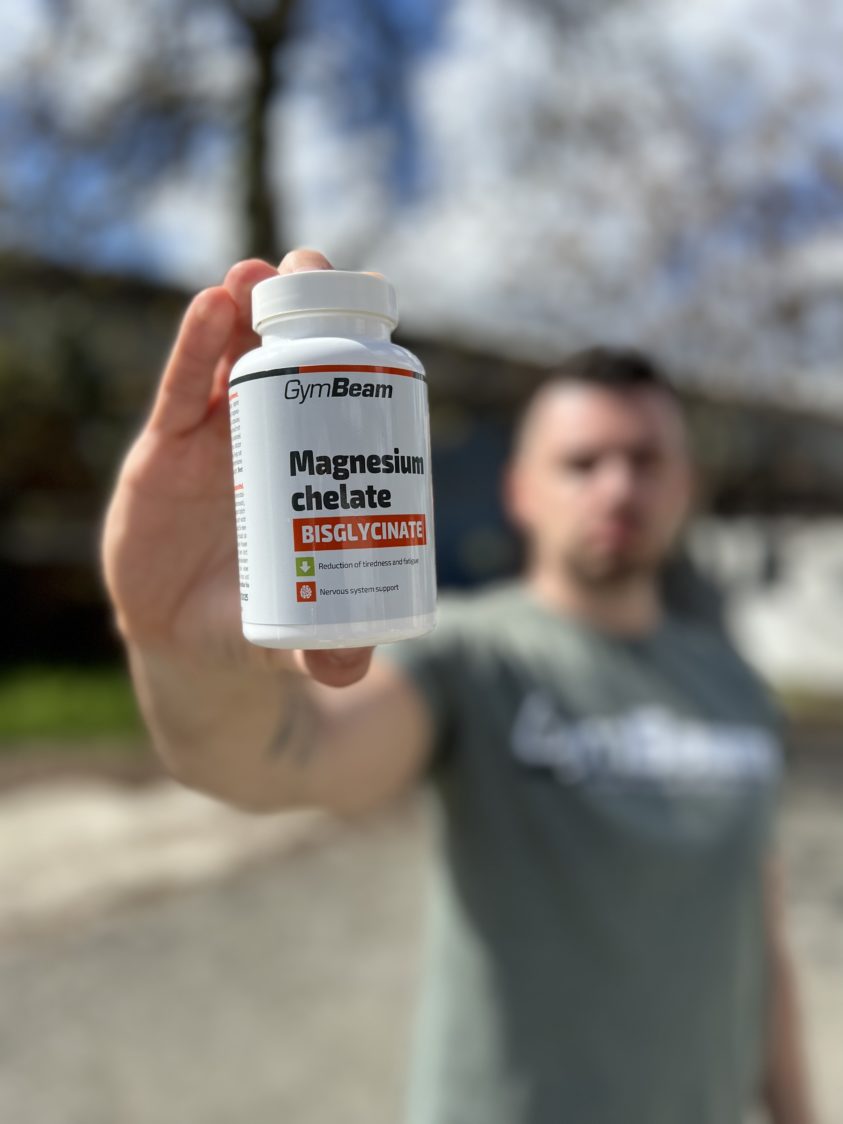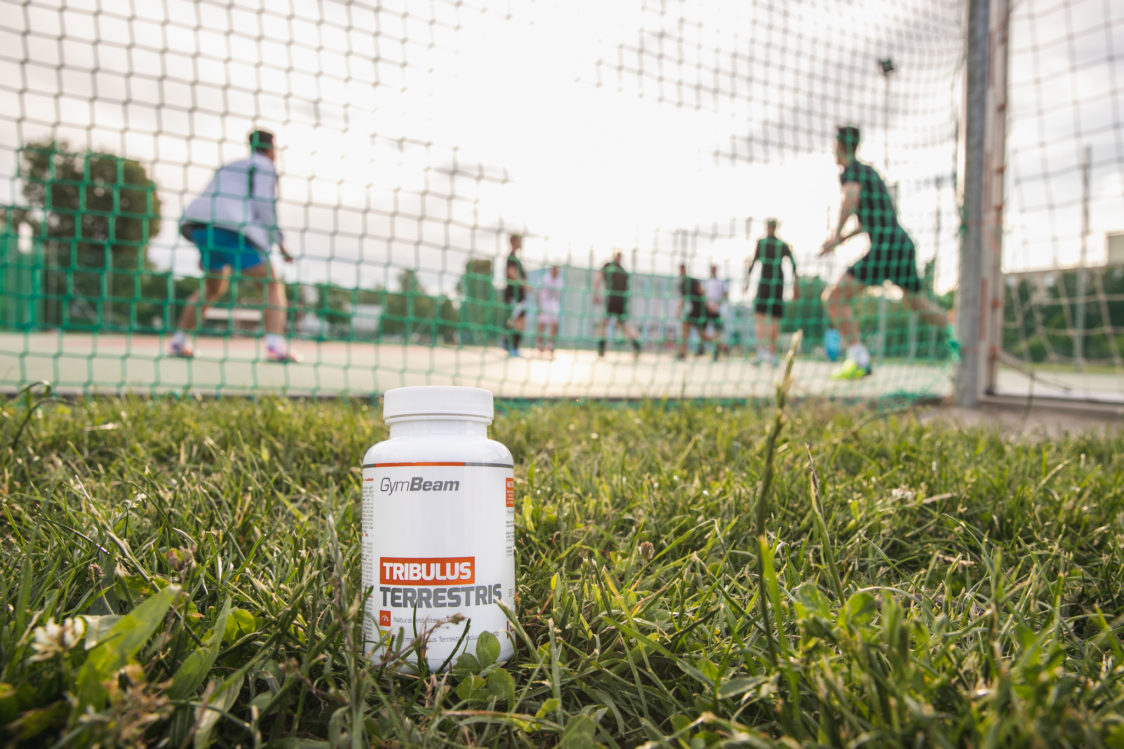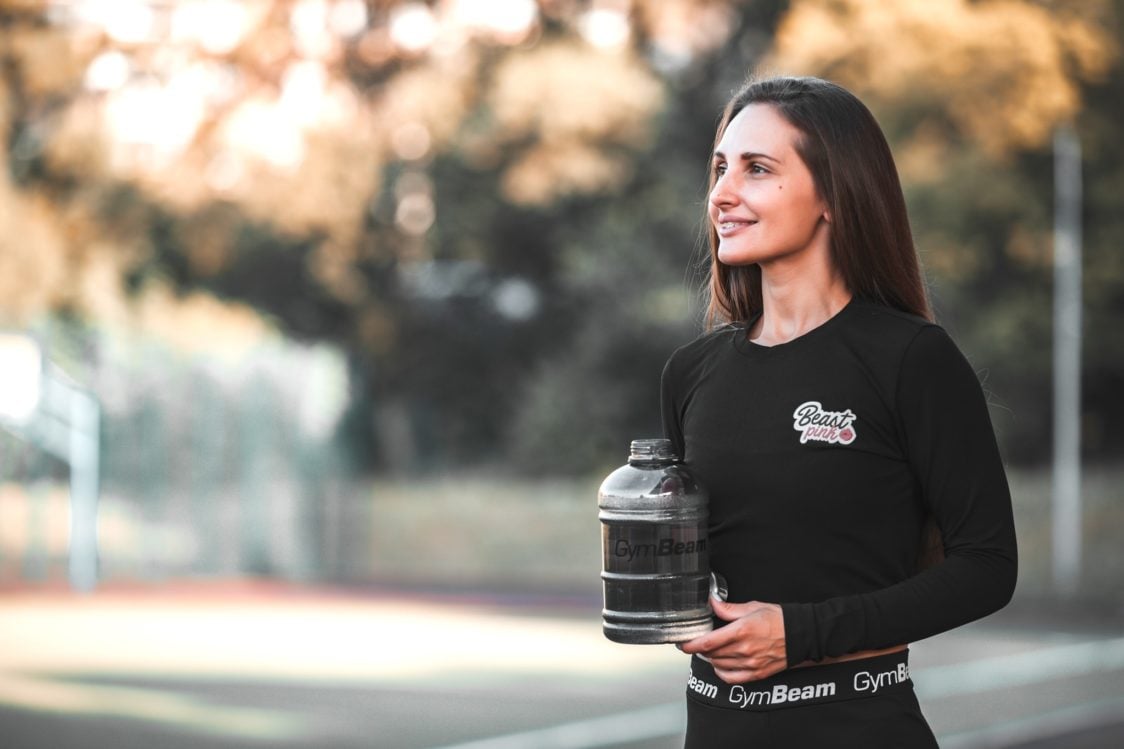Table of Contents
Although a varied and balanced diet is important for all of you, men and women alike, there are some significant differences in your nutritional needs. When you want to perfect and personalise your diet, you should certainly keep these differences in mind. The different nutritional requirements are mainly related to the different physiological processes that are typical of the male and female body. Women, for example, need to take specific vitamins and minerals in relation to their menstrual cycle or pregnancy. Men, on the other hand, normally have a higher need for energy and protein due to their typically higher proportion of muscle. In what other ways does the ideal nutritional intake of men and women differ?
Are the nutritional needs of men and women different?
If you take a closer look at the male and female body, you’ll find that the ways in which they differ are also reflected in their nutritional needs. Although the basic energy, macronutrient (protein, carbohydrates, fats) and micronutrient (vitamins, minerals) requirements are similar for both men and women, there are some specific ways in which they differ. For example, while women have a higher need for folic acid due to pregnancy, men should be careful to intake other specific nutrients, such as selenium and zinc, with regard to sperm or testosterone production. Thus, when the male and female body specifics are broken down, you find that there are a number of similar specific differences.
What physiological processes in the male and female body affect nutrition?
- The menstrual cycle and associated hormonal changes are one of the fundamental factors behind the specific nutritional requirements of the female body. [3]
- To these are also added specific needs during pregnancy and breastfeeding. [3]
- The menopausal period is also fraught with other changes and special nutritional requirements. [3]
- Men also have specific reproductive health needs.
- For example, the formation and optimal levels of testosterone require a higher intake of certain nutrients.
- There are also specific important nutritional requirements behind proper sperm function and fertility.
- In addition, men typically have more muscle mass, are generally taller and more robust, which increases their need for energy and nutrients.
- A woman, on the other hand, naturally has a greater fat mass, which is not as metabolically active as muscle.

How do the nutritional needs of men and women differ?
1. Energy intake
A daily energy expenditure, on which the energy needs depend, is made up of several parts.
- First of all, we are talking about the so-called basal metabolic rate (BMR), which is the energy the body needs practically just to maintain basic physiological functions during deep rest and sleep.
- You may also come across the term resting metabolic rate (RMR). This describes the energy spent when you are awake but at rest and without any activity.
- Further contributing to energy expenditure is the thermic effect of food (TEF), which is the energy consumed in the digestion of food.
- NEAT (Non-Exercise Activity Thermogenesis) is the energy expended during all activities except sleep, digestion of food and purposeful exercise. That is, it is the normal movement you do during the day, such as walking, cleaning, etc.
- Last but not least, the energy expended during intentional physical activity (TEA, Thermic Effect of Activity) has a role to play. It is this component that may be responsible for the largest differences in the final energy expenditure value. [6]
However, when we talk about differences between men and women, typically the basal metabolic rate is different. Men are typically taller, more robust, have more muscle mass and less fat than women, and their larger internal organs probably play a role here as well. As a result, their BMR is typically higher. Muscles do use more energy, and generally the more muscular you are, the more calories our bodies burn. In contrast, fat mass, which is naturally higher in women, is not as metabolically active. Thus, more muscle and less fat in the male body compared to the female body causes men to typically have a greater energy requirement. Of course, if a woman is more muscular than a man, or moves more and plays more sports, it is normal for her to need a higher energy intake as well. [17,41]
If you are wondering how to determine your optimal energy intake, read our article How to Calculate Your Energy and Macronutrient Intake for Weight Loss or Gaining Muscle?

How do sex hormones influence energy needs?
The different energy requirements of men and women are significantly influenced by male and female sex hormones. The male sex hormone testosterone promotes the growth of muscle mass, which entails a higher caloric requirement as well as muscle maintenance. Women usually just need a slightly lower energy intake.
Interestingly, however, in women this need may change periodically during the month. This is because it partly depends on the level of sex hormones, which fluctuate repeatedly during the menstrual cycle. Oestrogen and progesterone have the greatest influence on energy requirements. Their levels are highest during the luteal phase (following ovulation at about day 14 of the menstrual cycle), when they promote the burning of fat and protein. These hormones are also responsible for a higher energy expenditure, roughly by 2.5 – 11.5%. Hand in hand with this may also be an increased appetite. It is therefore normal for a woman to have a higher hunger and caloric intake during this period. [4,39]
How much energy do men and women need?
According to EFSA (European Food Safety Authority) recommendations, men need 2340 – 3340 kcal per day, while women are recommended to take in 1880 – 2680 kcal per day. The lower values may be sufficient for people with a sedentary lifestyle, while athletes and active people have a higher caloric requirement. However, these are basic guideline recommendations which should always be adjusted individually to suit the actual needs of the individual. [42]
But of course it is not the rule that men must have a higher energy requirement than women. If a woman has a high proportion of muscle mass, exercises regularly or even combines strength training with other activities or engages in endurance sports, she can easily surpass the caloric needs of a man who is not so active.
To see for yourself, try calculating your energy needs using our personalised online energy intake calculator.

2. Protein requirements
The body’s requirements for protein intake, as with energy, depend on the amount of muscle mass, the activity of sex hormones or the type of sporting activity. The higher the proportion of muscle the body has, the more protein it needs to maintain and regenerate it. If the goal is to grow and gain muscle tissue, the need for protein increases even more so. Since men are typically more muscular and have a higher proportion of muscle than fat, their need for protein is therefore usually higher. However, this is always individual and it is not uncommon that a woman, if she is involved in strength sports for example, to have more muscle than a man. In that case, her body may also require higher doses of protein.
How do sex hormones affect the need for protein?
Men and women have similar requirements for the amount of protein needed in their diet until puberty. However, during puberty, when sex hormones take the lead, these needs begin to differ. In males, due to rising testosterone levels, an increase in muscle protein synthesis (MPS), and their proportion of muscle mass increasing significantly, the male body’s protein requirements increase. [36]
In the female body, typically testosterone levels remain the same after puberty. If a woman does not exercise heavily at this age, her body’s protein intake requirements are normally lower than a man’s. However, the changing levels of female sex hormones, particularly oestrogen and progesterone, have an important influence and can slightly alter protein requirements over the course of the month. Thus, differences in protein requirements in women are also related to the menstrual cycle and fluctuations in sex hormones. [36]
The increase in protein requirement is likely to occur during the luteal phase of your menstrual cycle. This is when oxidation (burning) and catabolism of protein in the female body is higher, both during rest and physical activity. [28,39]
How much protein do men and women need?
The basic recommendation for protein intake is that a person who does not play sports and has a predominantly sedentary lifestyle should consume at least 0.8 g of protein/kg body weight (BW) daily. However, it has been shown to be preferable to increase this consumption, to at least 1 g/kg. [39,44]
Athletes and active people have a higher need for protein. According to the International Society of Sports Nutrition (ISSN), the recommended protein intake for maintaining and growing muscle mass is in the range of 1.4-2 g/kg BW. Other sources state that up to 1.6-2.4 g/kg may be more appropriate for muscle growth. [22,44]
However, there are currently no official recommendations specifying the requirements for men and women. The values mentioned therefore apply to both sexes. In general, however, it can be said that women are ultimately covered with an amount that corresponds to the lower end of the range. However, this requirement may increase with sporting activity, the amount of muscle, but also, for example, the aforementioned luteal phase of the menstrual cycle. [30]
If you want to learn more about protein intake, its importance, functions, plant and animal sources or supplementation, check out our article Protein: Functions in the Body, Optimal Intake, Food Sources and the Dangers of Protein Deficiency.
You might be interested in these products:
3. Vitamin and mineral intake
When we talk about the different nutritional requirements of the male and female body, we don’t just mean the need for energy and protein. In fact, there are also differences in micronutrients, such as various vitamins and minerals. The different needs in these cases are also related to the different reproductive systems of men and women, different hormonal processes or, for example, specific periods of life, such as pregnancy or menopause. What vitamins and minerals are typical for men’s and women’s health?
Vitamins and minerals essential for women
- Folic acid is essential for women, especially in regard to pregnancy, as it plays an important role in the proper growth and development of the foetus. With its low intake, for example, there is a higher risk of an underdeveloped nervous system. It is therefore important to receive sufficient amounts before and during pregnancy, as it is one of the few nutrients that are generally recommended to be supplemented during this period. [11]
- Iron is often deficient in women due to regular blood loss during menstruation and they often need supplement it. It plays an essential role in, for example, in proper blood formation, oxygen transport and immune function. [13]
- Calcium is especially important for women because of their increased risk of osteoporosis in older age. Women should therefore take care of their bone health and proper bone mineralisation even at a young age, and calcium is an essential component in this regard. [9]
- Vitamin D is involved in the optimal absorption and utilisation of calcium and phosphorus and is therefore also important for healthy bones. Women are at risk of a more rapid decline in bone density in older age and should therefore not forget to supplement their intake with sufficient vitamin D. [8]
- Vitamin B12 plays an important role in the optimal development of the foetus during pregnancy. It is involved in the formation of DNA, cell division and the proper development of the nervous system. [10]
- Iodine is another of the important substances that are related to a healthy pregnancy. This is because it is important for proper foetal brain development and cognitive function. [12]
- Magnesium is necessary for normal nervous system function and in women, among other things, is likely to help reduce the incidence of cramps during menstruation. [32]
- Omega-3 fatty acids have also been associated with pregnancy and gynaecological problems in women. In fact, they seem to have a positive effect on the development of the foetal nervous system. They could also apparently have a positive effect on reducing the risk of breast cancer and endometriosis. [19,29,40]
If you want to know in more detail why these nutrients are important for women’s health, what other functions they have, or how much a woman should consume daily, read our in-depth article Women and Nutrition: The Most Important Vitamins and Minerals for Health and Beauty.

Vitamins and minerals essential for men
- Zinc is one of the minerals that are essential for normal sperm function and stability, as well as for overall fertility. It also has a beneficial effect on prostate health and optimal testosterone levels. [14]
- Selenium is equally important for sperm production and optimal fertility. According to studies, this mineral seems to be associated with a lower risk of prostate tumours. Since it is an antioxidant, it is involved in reducing oxidative stress and protecting DNA from damage. It also supports immune function, making the body more able to destroy damaged tumour cells. [21]
- Omega-3 fatty acids are an important building block of sperm and are partly responsible for sperm motility, successful fertilisation of the egg and overall fertility. According to studies, infertility in men is accompanied by insufficient amounts of polyunsaturated fatty acids (which include omega-3 FAs). Thus, their supplementation could possibly have a positive effect on sperm function. [18]
- Coenzyme Q10 is a substance with significant antioxidant properties thanks to which it may possibly have a positive effect on male fertility and sperm activity. In fact, low sperm motility seems to be largely related to oxidative stress and free radicals that damage it. [34]
- Vitamin D is known for its positive effects on many parts of the body, and the male reproductive system is probably no exception. In fact, this vitamin is made in the testicles, among other organs, and so scientists believe it is involved in their function as well. It seems that it could have an effect on the quality and motility of sperm. It is also likely to be involved in the production of testosterone. However, its possible effects are still not fully known and understood. [7,23,37]
- Magnesium is also likely to have a positive effect on testosterone production. According to scientists, low levels of magnesium are associated with low levels of this male sex hormone. However, research shows that when deficient magnesium levels are corrected, testosterone levels also increase. [25,43]
- DAA (D-aspartic acid) is a substance naturally present in the body and is involved in the function of the nervous system and endocrine glands. Some studies suggest that it could possibly promote testosterone production, growth hormone and muscle growth. [35]

4. Specific nutritional supplements
Today we know that many other bioactive substances can also have a positive effect on the health of the human body. These are either single active substances or their combinations in the form of various plant extracts. There are many that, according to scientists and available research, have a promising effect on the health of men and women. Which ones are they?
Nutritional supplements suitable for women
- Myo-inositol is a biologically active substance that is being investigated for its possible effect on insulin sensitivity. It has been shown that it could be useful in PCOS (polycystic ovary syndrome), which is associated with reduced insulin sensitivity, elevated blood sugar (glycaemia) or irregular menstrual cycles. [16,38]
- Alfalfa is an extract from the alfalfa plant, which may possibly have positive effects during menopause. In one study, for example, researchers observed a reduction in the number of hot flashes typical of menopause. [5]
- According to research, evening primrose oil may have an effect on the symptoms of premenstrual syndrome (PMS). Specifically, for example, it is thought to have a beneficial effect on reducing breast pain. [26]
- Saffron extract is also apparently beneficial if a woman is suffering from premenstrual syndrome (PMS). In fact, according to studies, it seems that this extract could help with the emotional fluctuations typical of PMS, thanks to its effect on the activity of serotonin. [1,2]
- Complex nutritional supplements combine several nutrients and active substances, which have been shown to be associated with, for example, greater well-being during the menstrual cycle or PMS. By combining several substances, they can be part of the all-round care for women’s health.
Nutritional supplements suitable for men
- Tribulus Terrestris extract is known as a natural steroid substitute. Thus, it can have a positive effect on increasing testosterone levels in the blood as well as strength performance and muscle growth. [15]
- Ashwagandha is also known as Indian ginseng. It is believed to have an effect on fertility, thanks to possibly increasing sperm quality. Apparently it is also involved in sperm production and it seems that it may also be useful in terms of testosterone production. [31]
- Lycopene is a substance with antioxidant effects that is naturally found in tomatoes. Like other antioxidants, it may be important for health because it protects cells from free radicals. Men, like other antioxidants, may appreciate it because of their higher risk of developing prostate cancer. [45]
- Fenugreek contains steroidal saponins that are believed to support increases in testosterone levels, and with that, libido and sexual function. [27]
- Royal jelly belongs among bee products and according to research, it seems to have a beneficial effect on testosterone production. [33]
- Serenoa repens (Saw Palmetto) is used in the form of an extract whose main constituents are fatty acids (oleic acid, myristic acid, etc.). Based on studies, it seems that these are substances that could benefit prostate health. [24]
- Complex nutritional supplements, such as the testosterone booster AlphaMale or the prostate support supplement, combine several substances with an effect on men’s health. By combining important vitamins, minerals or plant extracts, they can help with the health of sperm, the prostate and ensure optimal testosterone levels.

5. Fluids intake
With fluids, as with other nutrients, the basic requirement is based on the size of your body. The bigger you are, the more fluids you need. Therefore, if we compare women and men, in most cases, men are the ones who need to drink more because they are simply bigger and bulkier. Moreover, their body has a higher proportion of water (about 60%) compared to a woman’s (about 50%). This has to do with the aforementioned naturally higher amount of muscle mass in men. It carries water, whereas fat tissue, which women naturally have more of, does not contain as much water. Therefore, men typically need to take in more fluids to keep their bodies sufficiently hydrated. [20]
But of course it can happen that a woman overtakes a man in the need for fluids. For one thing, she may have more muscle mass, but at the same time there are many other factors that influence the body’s requirements for their intake. We are talking, for example, about the amount, type and intensity of physical activity, climatic conditions, state of health, etc.
How much fluids do men and women need?
- EFSA (European Food Safety Authority) recommends that both men and women should consume 2 litres of fluids per day.
- The World Health Organisation (WHO) differentiates between the need for both sexes. Women with a sedentary lifestyle are recommended to ingest at least 2200 ml per day, while men at least 2900 ml / day.
- Another recommendation states that one should drink 30 – 45 ml of fluids / kg of body weight daily. If one is active or plays sports, especially in harsh climates, the need for fluids increases. [42]
If you’re interested in learning more about the benefits of water or what it means to stay hydrated, check out our article How Insufficient Water Intake Affects Your Health.
If you participate in sports and are interested in how to supplement fluids properly in relation to physical activity, don’t miss out on our article Sports Drinks: When to Drink an Ion Supply Drink or Water?

What should you remember?
Although the nutritional needs of the male and female body are similar in many ways, the fact is that you are not all the same and therefore have specific nutritional needs. The differences are partly related to body size and the proportion of muscle and fat mass. This results in men usually needing more energy, protein or fluids compared to women.
Characteristic needs are further related to different reproductive systems and typical periods in life. Thus, women should take care to take vitamins and minerals that are important for pregnancy or the menstrual cycle. Men, on the other hand, can use nutrition to influence sperm or testosterone production as well as prostate health. For both sexes, nutrients should be taken in the form of a varied and high-quality diet. However, when it comes to increasing the intake of specific nutrients, you can reach for nutritional supplements.
If you found this article interesting and enriched with useful information, don’t keep it to yourself and share it with your friends and colleagues.
[1] AGHA-HOSSEINI, M. et al. Crocus sativus L. (saffron) in the treatment of premenstrual syndrome: a double-blind, randomised and placebo-controlled trial. – https://pubmed.ncbi.nlm.nih.gov/18271889/
[2] AHMAD, T. et al. Phytochemicals in Daucus carota and Their Health Benefits—Review Article. – https://www.ncbi.nlm.nih.gov/pmc/articles/PMC6770766/
[3] BAILEY, R.L. et al. Sex Differences Across the Life Course: A Focus On Unique Nutritional and Health Considerations among Women. – https://pubmed.ncbi.nlm.nih.gov/35294009/
[4] BASUALTO-ALARCÓN, C. et al. Testosterone Signals through mTOR and Androgen Receptor to Induce Muscle Hypertrophy. – https://journals.lww.com/00005768-201309000-00009
[5] BORA, K.S. - SHARMA, A. Phytochemical and pharmacological potential of Medicago sativa: a review. – https://pubmed.ncbi.nlm.nih.gov/20969516/
[6] BURKE, L. Clinical Sports Nutrition.
[7] DE ANGELIS, C. et al. The role of vitamin D in male fertility: A focus on the testis. – http://link.springer.com/10.1007/s11154-017-9425-0
[8] EFSA PANEL ON DIETETIC PRODUCTS, NUTRITION AND ALLERGIES (NDA) Dietary reference values for vitamin D. – https://onlinelibrary.wiley.com/doi/abs/10.2903/j.efsa.2016.4547
[9] EFSA PANEL ON DIETETIC PRODUCTS, NUTRITION AND ALLERGIES (NDA) Scientific Opinion on Dietary Reference Values for calcium. – https://www.efsa.europa.eu/en/efsajournal/pub/4101
[10] EFSA PANEL ON DIETETIC PRODUCTS, NUTRITION, AND ALLERGIES (NDA) Scientific Opinion on Dietary Reference Values for cobalamin (vitamin B12). – https://www.efsa.europa.eu/en/efsajournal/pub/4150
[11] EFSA PANEL ON DIETETIC PRODUCTS, NUTRITION AND ALLERGIES (NDA) Scientific Opinion on Dietary Reference Values for folate. – https://onlinelibrary.wiley.com/doi/abs/10.2903/j.efsa.2014.3893
[12] EFSA PANEL ON DIETETIC PRODUCTS, NUTRITION AND ALLERGIES (NDA) Scientific Opinion on Dietary Reference Values for iodine. – https://onlinelibrary.wiley.com/doi/abs/10.2903/j.efsa.2014.3660
[13] EFSA PANEL ON DIETETIC PRODUCTS, NUTRITION AND ALLERGIES (NDA) Scientific Opinion on Dietary Reference Values for iron. – https://onlinelibrary.wiley.com/doi/abs/10.2903/j.efsa.2015.4254
[14] FALLAH, A. et al. Zinc is an Essential Element for Male Fertility: A Review of Zn Roles in Men’s Health, Germination, Sperm Quality, and Fertilization. – https://www.ncbi.nlm.nih.gov/pmc/articles/PMC6010824/
[15] FERNÁNDEZ-LÁZARO, D. et al. Effects of Tribulus terrestris L. on Sport and Health Biomarkers in Physically Active Adult Males: A Systematic Review. – https://www.ncbi.nlm.nih.gov/pmc/articles/PMC9368143/
[16] FRANK, K. Inositol Research Analysis. – https://examine.com/supplements/inositol/
[17] HEYMSFIELD, S.B. Energy Expenditure – Body Size Associations: Molecular Coordination. – https://www.ncbi.nlm.nih.gov/pmc/articles/PMC6375486/
[18] HOSSEINI, B. et al. The Effect of Omega-3 Fatty Acids, EPA, and/or DHA on Male Infertility: A Systematic Review and Meta-analysis. – https://www.tandfonline.com/doi/full/10.1080/19390211.2018.1431753
[19] CHOWDHURY, M.H. et al. Effect of supplementary omega-3 fatty acids on pregnant women with complications and pregnancy outcomes: review from literature. – https://pubmed.ncbi.nlm.nih.gov/32643471/
[20] CHUMLEA, W.C. et al. Total body water data for white adults 18 to 64 years of age: The Fels Longitudinal Study. – https://www.kidney-international.org/article/S0085-2538(15)46282-9/fulltext
[21] JAYACHANDRAN, J. - FREEDLAND, S.J. Prevention of prostate cancer: what we know and where we are going. – https://pubmed.ncbi.nlm.nih.gov/19477782/
[22] JÄGER, R. et al. International Society of Sports Nutrition Position Stand: protein and exercise. – https://www.tandfonline.com/doi/full/10.1186/s12970-017-0177-8
[23] JENSEN, M.B. Vitamin D and male reproduction. – http://www.nature.com/articles/nrendo.2013.262
[24] KWON, Y. Use of saw palmetto (Serenoa repens) extract for benign prostatic hyperplasia. – https://www.ncbi.nlm.nih.gov/pmc/articles/PMC6859144/
[25] MAGGIO, M. et al. The Interplay between Magnesium and Testosterone in Modulating Physical Function in Men. – http://www.hindawi.com/journals/ije/2014/525249/
[26] MAHBOUBI, M. Evening Primrose (Oenothera biennis) Oil in Management of Female Ailments. – https://e-jmm.org/DOIx.php?id=10.6118/jmm.18190
[27] MANSOORI, A. et al. Effect of fenugreek extract supplement on testosterone levels in male: A meta‐analysis of clinical trials. – https://onlinelibrary.wiley.com/doi/10.1002/ptr.6627
[28] MERCER, D. et al. Protein Requirements of Pre-Menopausal Female Athletes: Systematic Literature Review. – https://www.mdpi.com/2072-6643/12/11/3527
[29] MIDDLETON, P. et al. Omega‐3 fatty acid addition during pregnancy. – https://www.ncbi.nlm.nih.gov/pmc/articles/PMC6516961/
[30] MOORE, D.R. et al. Fuelling the female athlete: Carbohydrate and protein recommendations. – https://www.tandfonline.com/doi/abs/10.1080/17461391.2021.1922508
[31] NASIMI DOOST AZGOMI, R. et al. Effects of Withania somnifera on Reproductive System: A Systematic Review of the Available Evidence. – https://www.hindawi.com/journals/bmri/2018/4076430/
[32] PARAZZINI, F. et al. Magnesium in the gynecological practice: a literature review. – https://pubmed.ncbi.nlm.nih.gov/28392498/
[33] PASUPULETI, V.R. et al. Honey, Propolis, and Royal Jelly: A Comprehensive Review of Their Biological Actions and Health Benefits. – https://www.ncbi.nlm.nih.gov/pmc/articles/PMC5549483/
[34] SALVIO, G. et al. Coenzyme Q10 and Male Infertility: A Systematic Review. – https://www.mdpi.com/2076-3921/10/6/874
[35] SOLOMON, T. D-Aspartic Acid Research Analysis. – https://examine.com/supplements/d-aspartic-acid/
[36] TIPTON, K.D. Gender differences in protein metabolism. – https://pubmed.ncbi.nlm.nih.gov/11706282/
[37] TRUMMER, C. et al. Vitamin D, PCOS and androgens in men: a systematic review. – https://www.ncbi.nlm.nih.gov/pmc/articles/PMC5854850/
[38] UNFER, V. et al. Myo-inositol effects in women with PCOS: a meta-analysis of randomized controlled trials. – https://www.ncbi.nlm.nih.gov/pmc/articles/PMC5655679/
[39] WOHLGEMUTH, K.J. et al. Sex differences and considerations for female specific nutritional strategies: a narrative review. – https://pubmed.ncbi.nlm.nih.gov/33794937/
[40] YALÇIN BAHAT, P. et al. Dietary supplements for treatment of endometriosis: A review. – https://www.ncbi.nlm.nih.gov/pmc/articles/PMC8972862/
[41] YOO, J.-K. - FU, Q. Impact of sex and age on metabolism, sympathetic activity, and hypertension. – https://pubmed.ncbi.nlm.nih.gov/32779294/
[42] Dietary Reference Values | DRV Finder. – https://multimedia.efsa.europa.eu/drvs/index.htm
[43] How can you increase testosterone naturally? - Examine. – https://examine.com/supplements/magnesium/faq/vJKRMQ8-how-can-you-increase-testosterone-naturally/
[44] Optimal Protein Intake Guide - Examine. – https://examine.com/guides/protein-intake/
[45] MIRAHMADI, M. et al. Potential inhibitory effect of lycopene on prostate cancer. – https://www.sciencedirect.com/science/article/pii/S0753332220306521


Add a comment